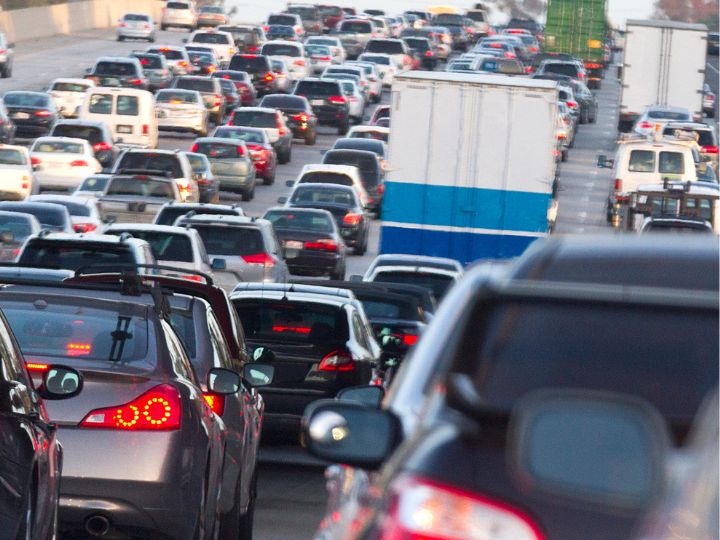With the world watching, the federal government has set an ambitious clean energy agenda for the United States, aiming to cut overall emissions of greenhouse gases to net zero by 2050. However, a study by University of Houston energy researchers suggests that Texas is unlikely to reach carbon neutrality in the transportation sector in this timeframe without fast measures and significant investment.

“What would it take to make the Texas transportation sector net zero by 2050?” Ramanan Krishnamoorti, UH vice president for energy and innovation, asks and answers. “The answer is a miracle, policy interventions that start as soon as possible, and somewhere between 30 to 50 billion dollars of public money between now and 2050 and at least an equal match from the private sector.”
More than 230 million metric tons of carbon dioxide gas are released each year by the state’s transportation sector. Even under the most aggressive plans, and assuming the state’s electric grid had converted to net-zero power generation, the analysis showed that the state will fall short of achieving net-zero emissions from transportation by 2050. More than 40 million metric tons of emissions would still be released by older gasoline or diesel-powered vehicles that remain on the road.
“The future is crucial not only for Texas, where carbon emissions hinge on transportation solutions but also for our nation. Emissions transcend state lines and considering the size of Texas, its growing population and strong industry, the impact is significant,” said Krishnamoorti, who collaborated with UH Energy researcher Aparajita Datta on a white paper titled "Net Zero in Texas: The Role of Transportation.
To illustrate the financial challenges ahead for Texas, here are some key findings:
- In addition to the cost of vehicle replacement, the change will require an annual expenditure of $250 million to $640 million for Level-2 (L2) charging stations and between $500 million and $1.3 billion for DC Fast Charging (DCFC) stations in 2040.
- The switch from vehicles with internal combustion engines to electric vehicles (EVs) will result in the retirement of many gas stations, requiring expenditures of between $2 billion and $5 billion for environmental remediation.
- While prevailing hourly wages in the traditional auto sector range from $26 for auto-service technicians and mechanics to $60 for a unionized auto assembly worker, most jobs in the EV industry are not unionized and range from $17-$21 per hour.
The increased demand for EV production materials, such as lithium, cobalt, copper, manganese and graphite, also poses a significant challenge. The analysis predicts a 140-to-500% increase in demand for these critical minerals. Based on current battery technology, the total volume of lithium and cobalt required for the number of EVs expected in Texas by 2050 would exceed the 2021 worldwide production of both minerals. The increase in demand will most likely fuel an increase in prices for those materials.
However, there is some good news as well. The transition from gasoline-powered vehicles to zero-emission vehicles could add between 40,000 and 180,000 jobs to the Texas economy between now and 2050. These jobs will span various sectors, including transportation, electricity, advertising, retail data and networking, and maintenance. But to realize economic gains, the EV jobs will require higher wages and the current workforce will have to undergo upskilling and reskilling.
The transition could also result in $104 billion in public health benefits for Texans – fewer deaths, fewer asthma attacks and fewer sick days, according to the study.
Clearly, the implications of Texas' transportation sector on the economy, public health and the environment are far-reaching, affecting the well-being of Texans and extending beyond state lines.
“It is evident that decarbonizing Texas’ transportation sector will be a significant challenge and relying solely on consumer behavior to change is unrealistic,” said Krishnamoorti. “We need robust policies to drive the state’s transportation electrification. Let’s acknowledge the journey ahead; federal mandates alone will not guide us to net zero by 2050. Texas needs to act now.”